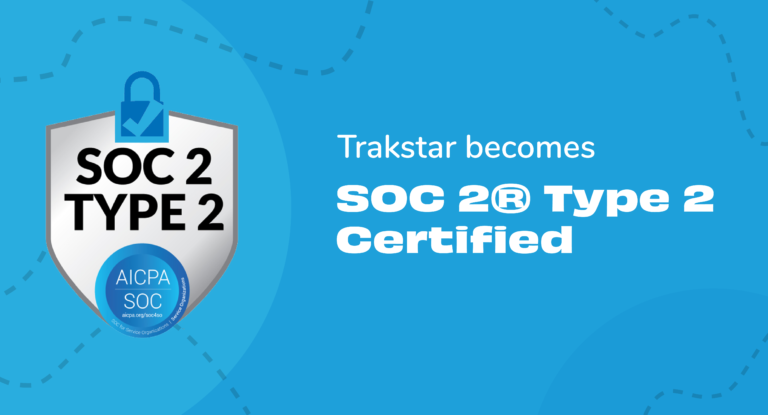Old School vs. New School: Managing A Remote Workforce
Posted by Trakstar • October 10, 2022 (Last modified January 27, 2023) • 7 min read
Managing a remote workforce is challenging for even the best leaders. Whether your company has always had remote workers or you were thrust into remote workforce management because of the pandemic, it’s not something that comes naturally to many people. Why? Even years after most of us went remote, there are gaps and struggles that we are still trying to fill.
One thing is for certain: remote work isn’t going anywhere. While some people will try to say that remote work is a fad and people will want to return to the office, that isn’t necessarily true. Remote workforces have opened doors to people who previously didn’t have as many options for great jobs – and that means you can attract and retain better talent. You have more options – theoretically.
To fully take advantage of the plethora of options you have with remote hiring, you must manage your remote workforce properly. If you don’t, you’ll have struggling employees, retention struggles, and a lack of productivity. You need to marry old-school methods with new-school tools to see the highest returns.
What is A Remote Workforce?
The “remote workforce definition” changes depending on who you are talking to about the subject. Some will say you cannot have a remote workforce unless everyone at your company can work from home. Others will say that the remote workforce definition includes those who are hybrid workers as a more all-encompassing trend. Regardless, it’s important to make the distinction when hiring someone new. If a job is not genuinely remote, but hybrid, someone who lives hundreds of miles away cannot realistically apply for that job.
Remote Workforce Management: Old School vs. New School
Workforce management is difficult, and many HR leaders, managers, and business owners have trouble understanding how remote workers were once managed and how they are managed now.
There are two critical elements of remote workforce management:
- Trust
- Accountability
When these two elements work together, managing the remote workforce is easier than it has ever been – and more effective. Accountability means that employees are doing their jobs without interruption. They are reaching their KPIs and benchmarks, succeeding at their work, and working during their scheduled times. If you use some communication tool, like Slack or Teams, it means they are available to answer questions readily.
To build that accountability, you need to use remote workforce management software. There are many kinds of remote workforce management. In particular, we’re talking about talent development software.
The Use of Remote Workforce Management Software
There’s no better software for talent management in a remote setting than the Trakstar platform. Our solutions have been purpose-built to help HR leaders, managers, and C-suite executives develop talent within their workforces, whether in-person, hybrid, or remote. How do we do that? We focus on the key moments of the employee lifecycle and perfect the processes around them. When building and managing a remote workforce, there are some important things to consider.
Hiring: When you are remotely hiring for a remote position, a lot can go wrong. You need to work with applicant tracking software that helps make the process seem a little more personal – rolling out the red carpet for your applicants, if you will. In the old school days, a phone call and an email were enough. Not anymore. Make sure you see your applicants and they see you by scheduling video interviews with the hiring team – they need to meet multiple people! Send your offer letter, but personalize it so that they get excited about your job.
Onboarding and Training: Old school onboarding and training required travel to the office or many things that “fall through the cracks.” That isn’t the case anymore! Now, you can build an entire onboarding curriculum that your new employees can use from anywhere in the world, even on their phones! Once someone is onboarded, continue that training by running courses that are automatically emailed to whoever needs to take them, saving you time and ensuring that everyone is compliant.
Performance Management: The most important part of remote workforce management is performance management. How will you talk to your employees about their job if you aren’t around them all the time? It’s easy! Using an automated performance management system that reminds employees to fill out surveys, solicits 360-degree feedback, creates forms to eliminate bias, and keeps notes on employee performance throughout the cycles, this management system is so much better than the old-school method of paper folders that end up crunched, lost, and confusing.
Old school remote didn’t have this software to use. It was all systems made up by individual HR leaders and there was no consensus. That’s not how to manage a remote workforce anymore. Now you can use tools that have been designed to help HR leaders will all of their essential tasks. To schedule a demo of the Trakstar platform, click here.
Securing Your Remote Workforce
When your entire workforce is remote, there are a few things you need to consider that maybe you didn’t have to before. The world has changed, people are more connected, and there are more people out there willing to go to extreme lengths to damage you, your employees, and your reputation.
When managing a remote workforce, you are responsible for ensuring that everything you use, from your remote workforce management system to your email, is secure and safe. It pays to do a little extra work to find secure tools.
To learn about Trakstar’s security, click here.
Challenges of Managing a Remote Workforce
Of course, there are challenges to managing a remote workforce as well. These challenges take some time to account for and may not be apparent for the first few months or even years of being remote. However, it can work. If you think your remote workforce is failing, it may just be a sign that you need to make micro changes until you see what works and what doesn’t.
Some of the things you’ll need to think through include:
- Distractions (though this is an old-school thought – there are just as many distractions in the office)
- Monitoring projects and tasks (explore project management tools like Trello or if you’re looking for another tool, explore the best alternatives to Trello)
- Isolation feelings (many people enjoy working from home, but it truly isn’t for everyone!)
- Increased burnout (watch our webinar here to see how you can avoid burnout.)
- Increased security concerns
- Natural disasters and internet outages
Many of these challenges are workable, but it will take some time.
Companies With Remote Forkforces
You’re not alone in managing a remote workforce! Some of today’s top companies have decided to go remote, including:
- 3M
- Airbnb
- Aquent
- Atlassian
- Coinbase
- Dropbox
- Hubspot
- Lyft
- Quora
- Shopify
- Slack
- Spotify
These are just a few! Businesses of all sizes and industries have decided to go remote over the last few years.
Struggling with Remote Workforce Management & Talent Development? Trakstar Can Help!
Managing any kind of workforce is difficult! Managing a remote workforce is even more complex because it takes out some of the human element in human resources management – unless you get a tool that helps you cut through some of the busy work and get back to the human side.
Having a platform that naturally guides your employees through the employee lifecycle, encouraging ongoing education and training while regularly checking engagement and setting goals, can help attract, retain, and engage them. When you think about your remote workforce, you need to do all of those essential things you’ve always done; you just need a different approach.
Even if you’ve been remote for a long time, the very face of managing a remote workforce has to look different now.
Our platform connects those pivotal employee moments you struggle to manage remotely so that you can see how they impact your workforce. It gives you the data about those moments and helps you tell the story about the work you do – and the employees you represent and fight for daily.
To learn more about the Trakstar platform and how it can help manage your remote workforce better, schedule a demo today.
Don't Miss Out on More Great HR Articles!
Subscribe to get the latest, greatest HR and Talent Development content straight to your inbox.


